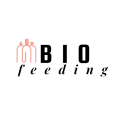Creating a Serene Ambience for Joyful Feeding
The key to a happy bottle feeding routine revolves around the baby’s comfort and emotional development. Infants attach securely and derive nourishment when parents nurture a peaceful feeding environment. Let’s dive into some practical ways to foster a calm and happy bottle feeding experience.
The Power of Secure Attachment
A secure attachment is crucial for your infant’s overall development. It’s a bond that promotes trust, emotional stability, and positive relationships. Parents often wonder what exactly constitutes a secure attachment. In essence, it’s about being responsive to your baby’s needs and making them feel safe, especially during feeding times. When babies feel secure, they are more likely to enjoy their bottle feeding, making it a happy feed for both baby and parent.
Embrace the Right Bottle Feeding Techniques
Feeding your baby isn’t just about nutrition but also about bonding. However, many parents struggle with knowing the right bottle feeding techniques. These tips will help you foster a joyful feeding routine:
- Ensure your baby is comfortable and well-supported during feeding
- Hold the bottle at an angle to minimize air swallowing
- Take breaks in-between feeding to prevent overfeeding
- Encourage skin-to-skin contact for emotional bonding
Involve Loved Ones in the Feeding Process
Given that bottle feeding can be a significant bonding experience, it’s important to involve other family members in the process. Seeing varied warm expressions and hearing familiar voices can help your baby develop a sense of belonging, making feeding time a pleasant experience. This Instagram post showcases a heartwarming scene of family involvement during feeding time.
Revamp Your Feeding Routine
If you’re struggling with an uncomfortable feeding routine, a simple bottle swap could be the game changer. An ergonomic bottle that aligns with your baby’s feeding style can make a world of difference. Remember, a happy feeding experience isn’t just about the feed but also the way it’s delivered. For more on this, check out this article.
Practicing Patience and Providing Comfort
Patience plays a crucial role in fostering a happy bottle feeding routine. Sometimes, babies may resist feeding or show signs of discomfort. As a parent, it’s key to understand these signals and respond calmly. Rather than rushing through the feed, remember that it’s a process of nurturing and bonding.
Recognize and Respond to Your Baby’s Feeding Cues
Babies have their unique way of expressing hunger and satiety. Learning to recognize these cues can make feeding a smoother process. For instance, turning away from the bottle may signal that your baby has had enough, while sucking on hands could indicate hunger. By responding appropriately to these cues, you can ensure a happy feed.
Experimenting with At-Breast Supplementer
If you’re a breastfeeding mom transitioning to bottle feeding, you might want to consider using an at-breast supplementer. This device allows babies to suckle directly at the breast while receiving supplemental nutrition. Many moms have found it to be a useful tool for maintaining the breastfeeding bond during the transition. You can read about their experiences at La Leche UK.
Establishing a Routine
Finally, establishing a predictable feeding routine can help create a calm and secure environment. Infants thrive on consistency. Having a set regimen can aid in sleep training and overall emotional development. For some beneficial insights into establishing a routine, visit Noob Mommy’s easy routine guide.
Rewarding Your Baby’s Successful Feed
The best way to encourage your infant’s feeding success is through rewards. It may sound trivial, but verbal praise, upbeat expressions, and warm snuggles after the feeding can motivate your baby and strengthen your bond. This simple routine also sets a tone for a positive feeding experience.
Creating a Distraction-Free Feeding Zone
When it comes to feeding your baby, the environment matters a lot. Eliminating distractions, such as loud noises or bright lights, can significantly enhance your infant’s ability to feed peacefully. Create a serene, comforting feeding space where you and your baby can enjoy uninterrupted bonding. The Reddit discussion on toddler’s sleep routine can give you some handy tips about creating a distraction-free environment for babies and toddlers.
Overcoming Common Bottle Feeding Challenges
No matter how well you’ve mastered your feeding techniques and created the perfect feeding zone, there will be times when you face challenges. Your baby may refuse the bottle, show signs of distress, or struggle with digestion. But don’t worry, such instances are common. Understanding your baby’s unique needs and showing empathy can help you overcome these difficulties. Check out this insightful quora thread about dealing with separation anxiety in kittens: it provides valuable lessons which can indeed be used when handling bottle-feeding troubles in infants.
Believing In the Power of Presence
The presence of a parent during feeding sessions provides emotional support and reassurance to your baby. Being physically present helps to reinforce the affectionate bond between you and your baby. Additionally, it allows you to observe your baby’s feeding pattern and react promptly to their needs. Your gentle touch, soothing voice, and comforting gaze translate into a feeling of love and security, enhancing your baby’s feeding experience.
Responding to Emotions: Yours and Your Baby’s
Feeding can be an emotional time for both the parent and the baby. If your baby seems unsettled, it’s important to look after your emotional wellbeing too. Take some time for self-care, seek support from loved ones or consult professional advice if needed. Studying the emotional development of babies in a silent environment emphasized this crucial communication between parents and their young ones. It’s our responsibility as parents to make our babies feel safe, loved, and understood.
Continued Learning and Improvement
Lastly, always remember that nurturing a joyful feeding environment is a continuous learning process. Every baby is unique, and their feeding needs may change over time. Hence, you need to be flexible and open to new strategies and insights. Regularly reading and learning about infant feeding can significantly enhance your understanding and skills.

